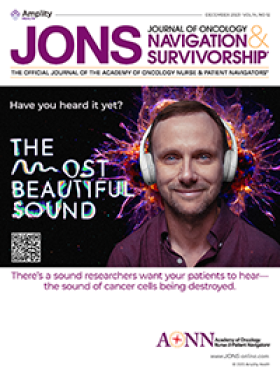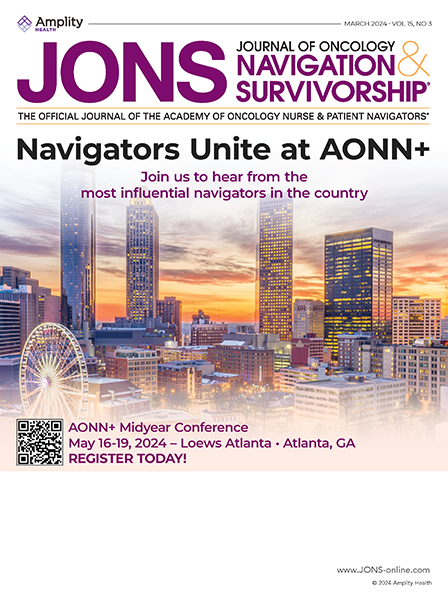Nurse navigation and distress monitoring will go hand in hand as the American College of Surgeons’ Commission on Cancer institutes its Cancer Program Standards 2012: Ensuring Patient-Centered Care as part of its accreditation standards beginning January 1, 2012 (www.facs.org/cancer/coc/cps2011.html).
The distress assessment will uncover individual patient concerns. Whether it is the nurse at the bedside, nurse in the outpatient office, or nurse at the chemotherapy chair who completes the distress monitoring tool, the assessment allows the introduction of a nurse navigator to address the patient’s needs. Interaction along the care continuum has the potential to strengthen teamwork between nurses and navigators. As other healthcare team members are consulted based on patient need, the team is enriched and the patient experiences the many layers of cancer support services.
Distress assessment allows nurses and navigators to build a resource bank that can be used consistently to meet each patient’s identified needs. All members of the patient’s care team can use the referral bank to consult on needs such as dietary, respiratory, etc. The goal would not be to leave the nurse navigator out of the team, but to use his or her time for more challenging concerns or problems. This would help relieve any workload burden the nurse may feel when the process is introduced. In time, other nurses may become comfortable addressing patient concerns independently.
At first, the distress tool may identify common patient needs for which the facility lacks resources to meet. This is an opportunity for the nurse navigator to gather data and present to the cancer committee a quality-improvement initiative.
Following up on plans put in place to address needs may present a challenge to the nurse navigator. The nurse may need to try different interventions if the initial care plan did not reduce patient distress. In addition, the navigator needs to communicate throughout the care continuum as the patient weaves in and out of hospital and outpatient clinic. Clear communication will decrease duplication of efforts and make the patient feel like the care is given in a seamless healthcare system. The navigator becomes the hub of the wheel with the healthcare team members being the spokes who help the patient circle through the healthcare system.





